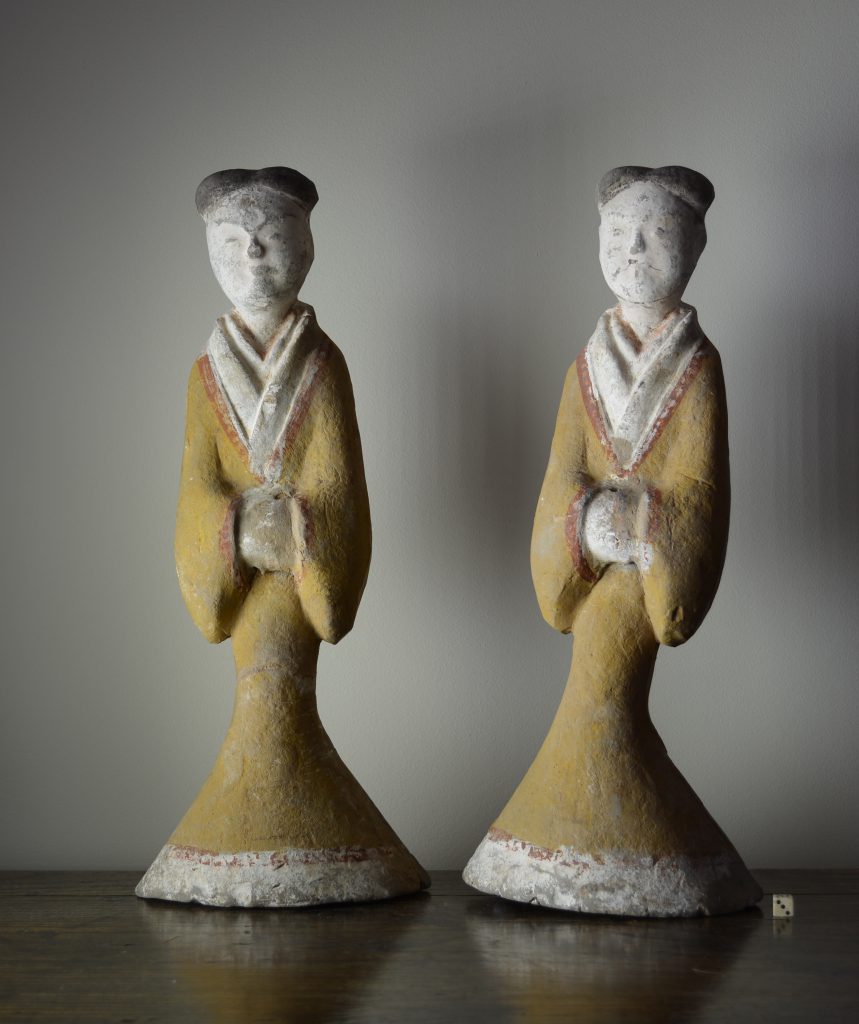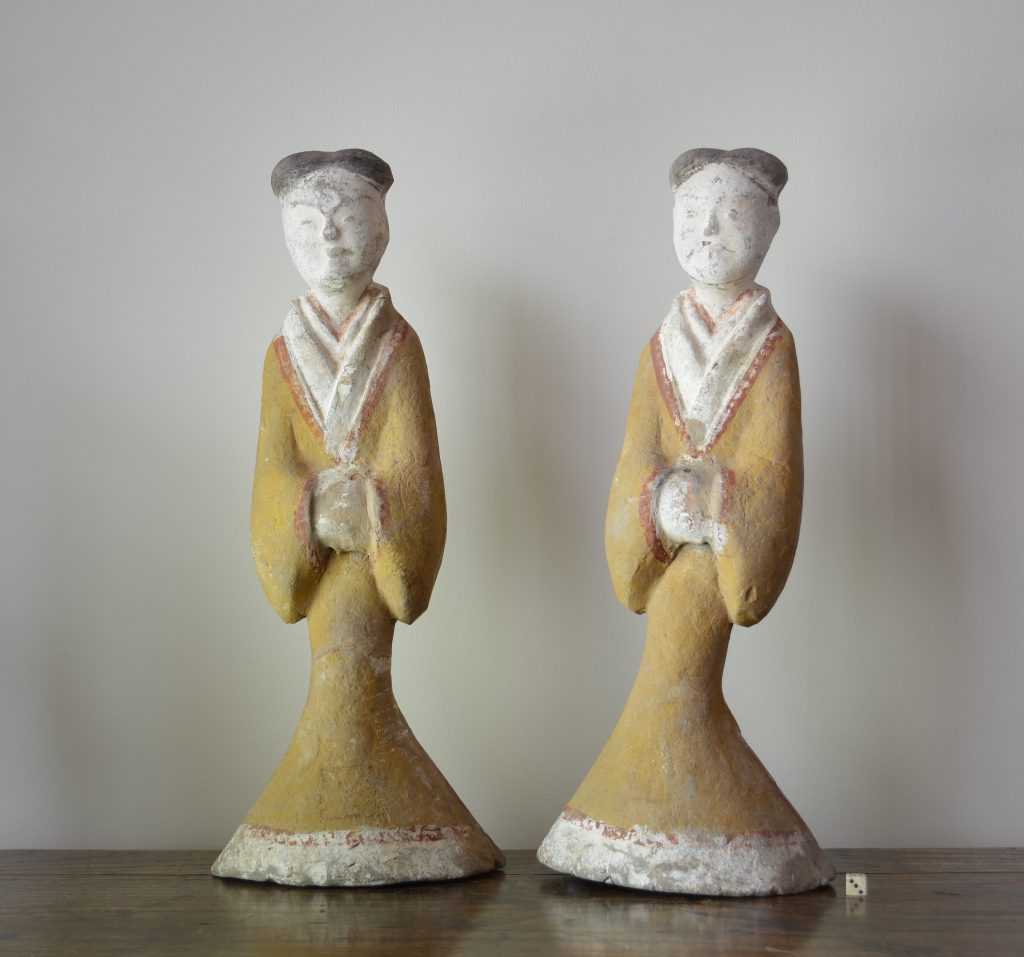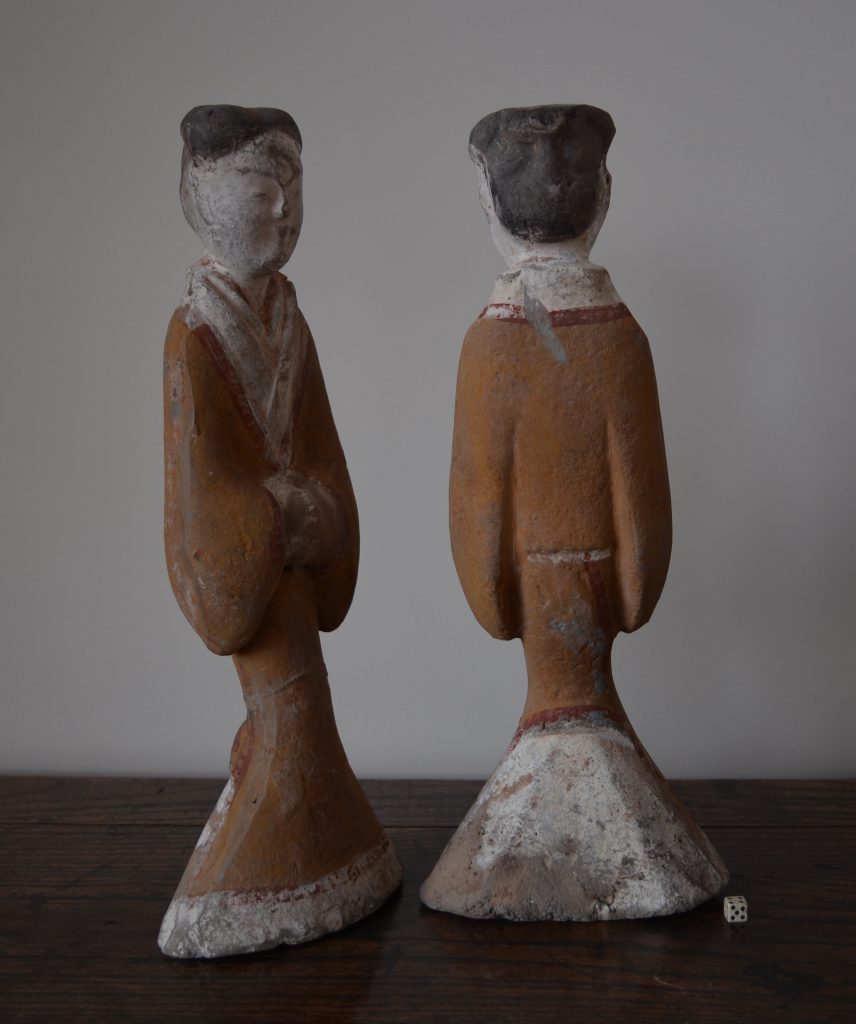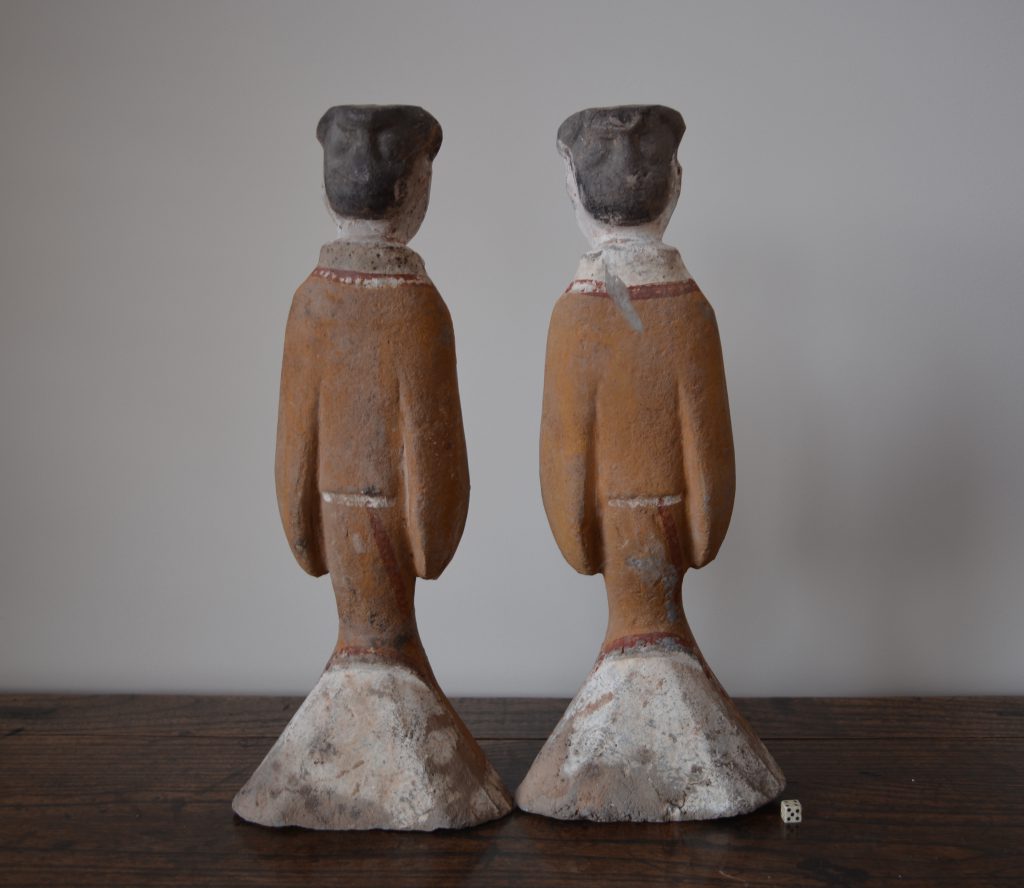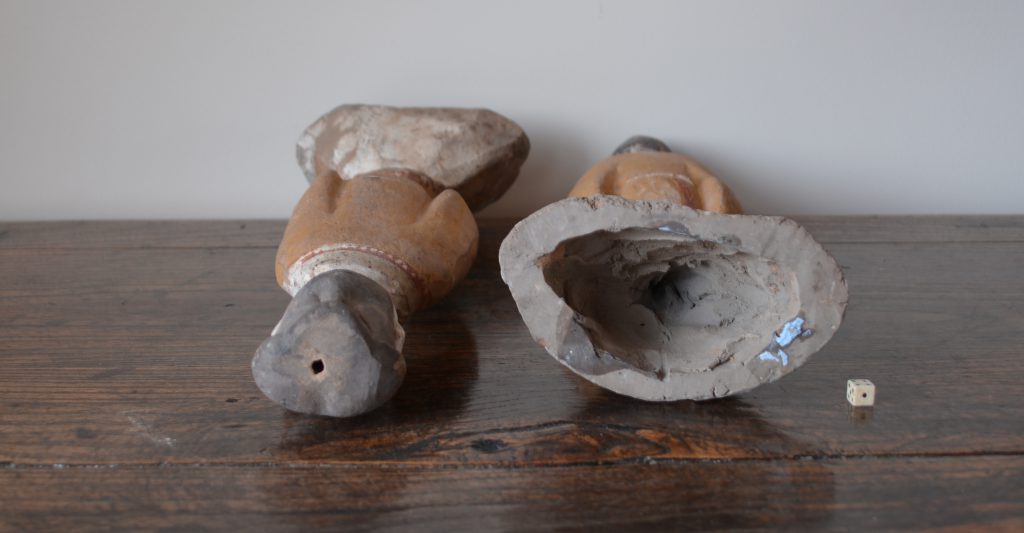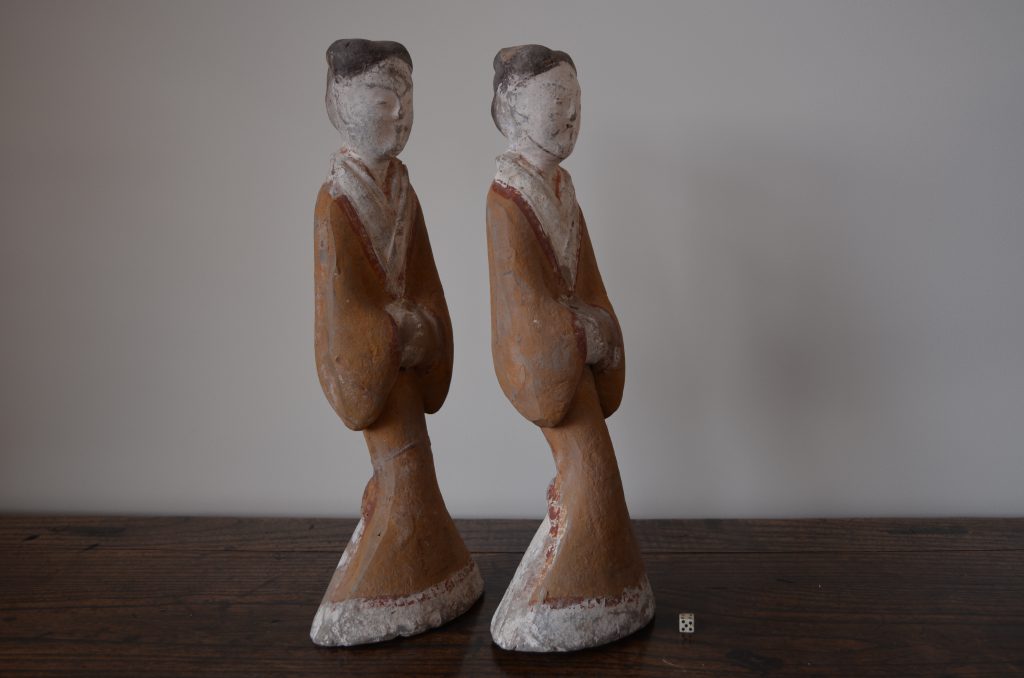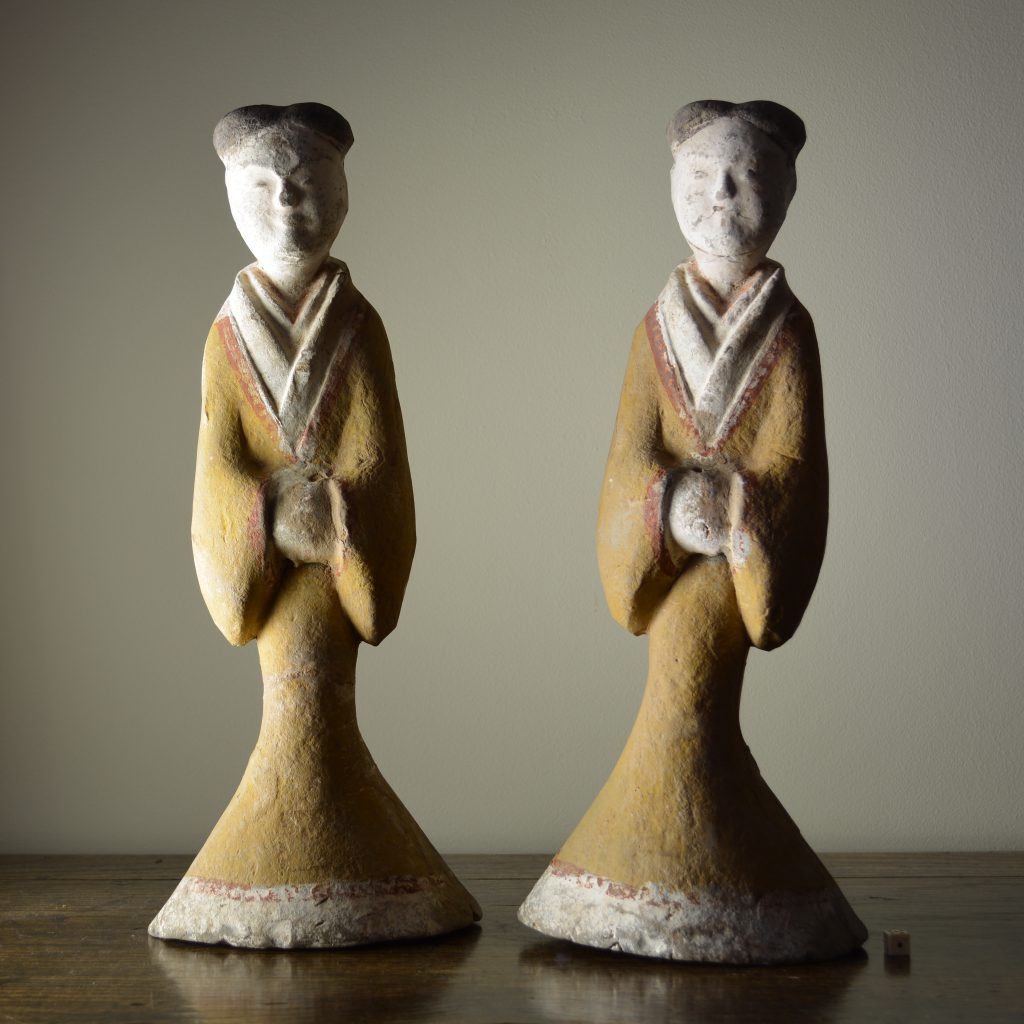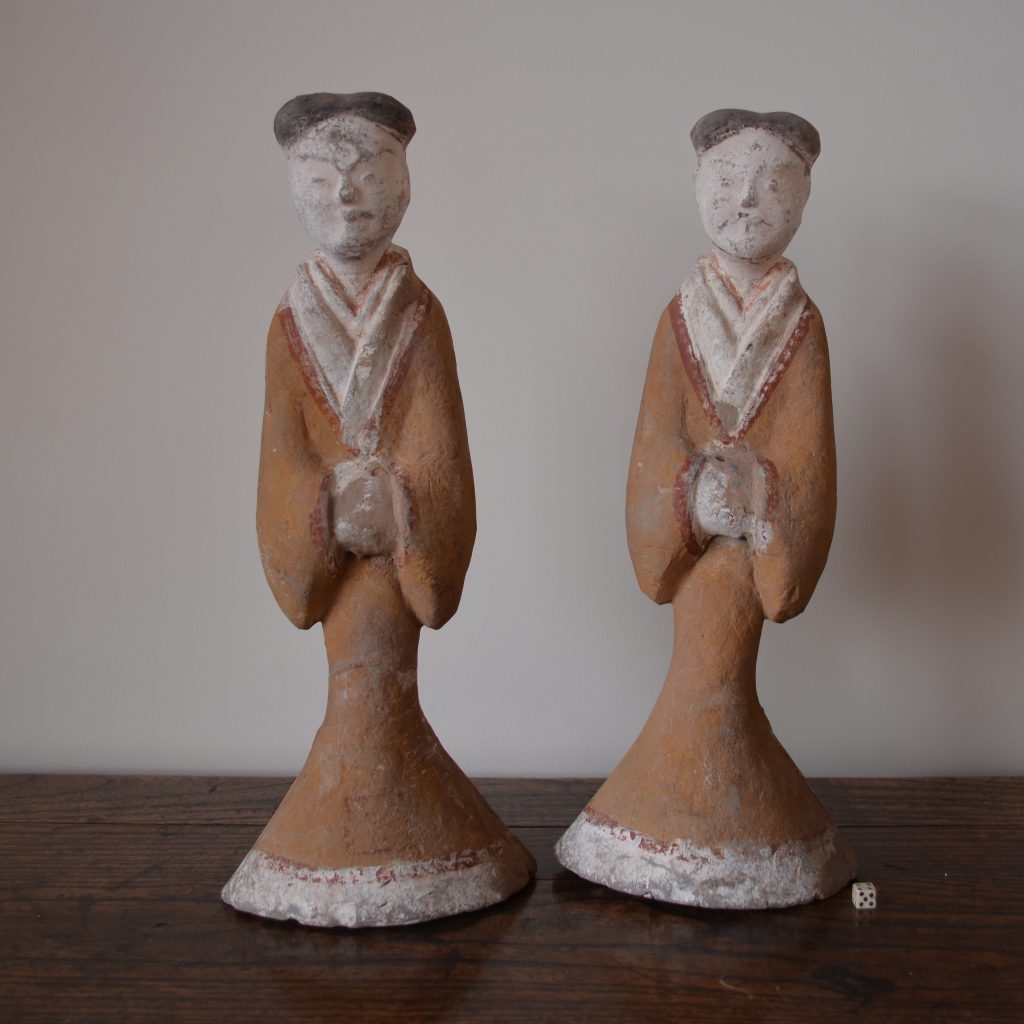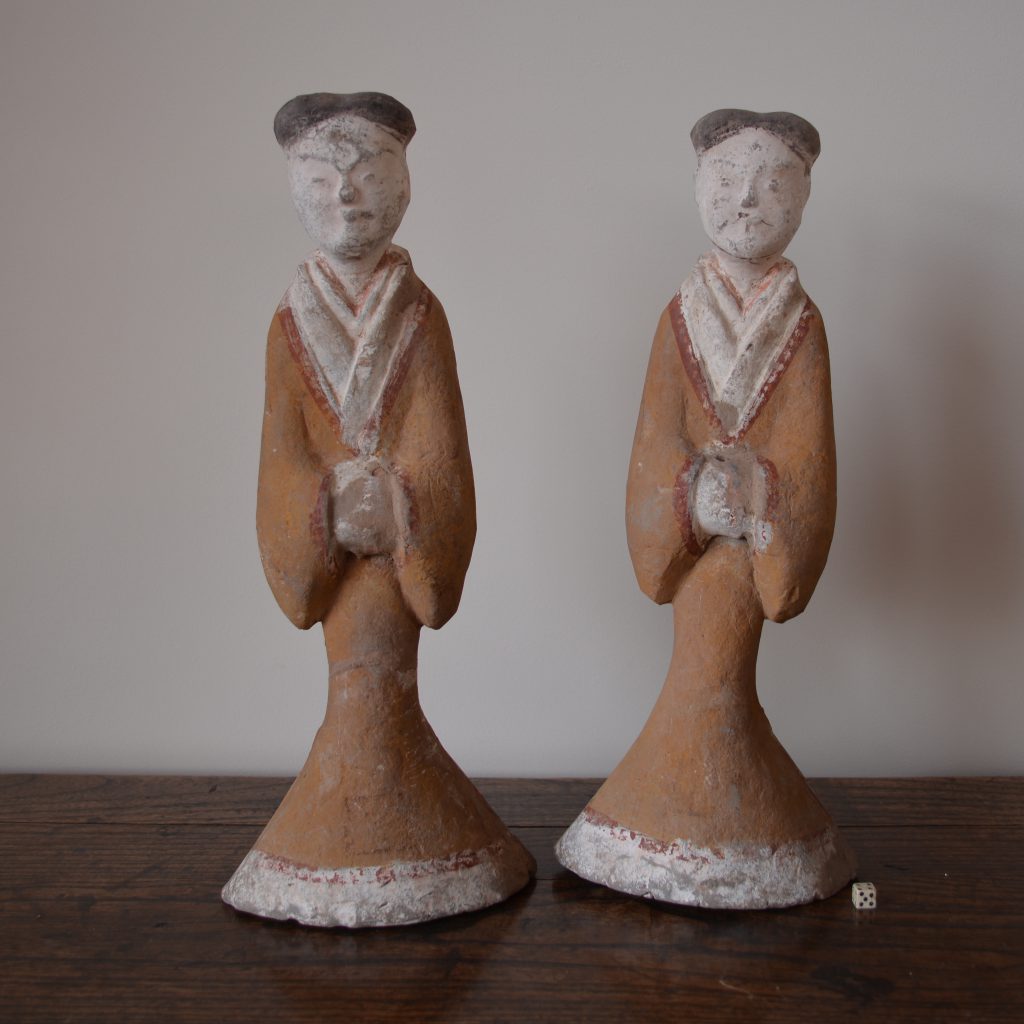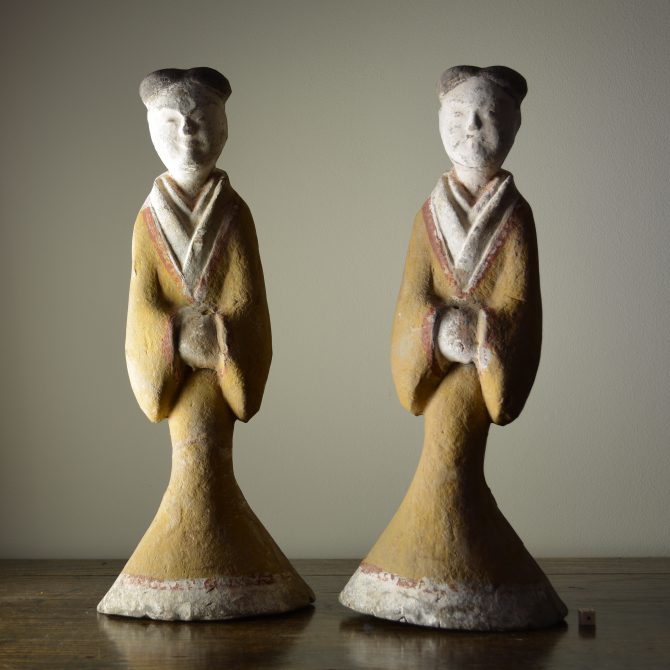
A Pair of Painted Han Pottery Figures of Female Attendants, Western Han Period 202 B.C. – A.D 6.
A pair of Western Han (202 B.C. – A.D 6.) cold-painted pottery attendants. These Mingqi grey pottery female figures are in typical Western Han style clothes, their hands are clasped together with a hole for them to hold something, what ever it was is long since lost.
SOLD
- Condition
- In good condition, one figure is broken through the slender part above the triangular shaped robe base.
- Size
- Height : 35.5 cm (14 inches).
- Provenance
- Christies's King Street, 9th of May 1988, lot 115. John Marriott (1921-2007) and Count R. L. Sangorski (1914-2014).
- Stock number
- 111
- References
- A related Western Han pottery figure of rather flatter appearance was recovered from the tomb of the Han emperor Huidi (195-188 B.C.) see : The Quest For Eternity, Chinese Ceramic Sculpture from the People's Republic of China. Los Angeles County Museum, Thames and Hudson 1987. ISBN 0-500-27465-7. For larger Western Han pottery figures of this type see : The Spirit of Han, Ceramics for the After-Life (Edited by Aileen Lau, Southeast Asian Ceramic Society, 1991) pages 86 and 87, plates 31, 32 and 33.
Information
Mingqi Pottery :
This piece is an example of Mingqi, objects made specifically for burial, to be taken with you to the afterlife. The `Terracotta Army` is the most famous example of this type of burial object. Mingqi objects represented people, houses, farms, granaries, livestock and indeed anything important from this world that would give you comfort and status in the next. The `Terracotta Army` were made life size and on a vast scale, reflecting the importance of the first emperor of China but most Mingqi objects were small models, far smaller than the object or indeed person they were meant to represent. Mingqi ceramics were not the only goods to appear in early Chinese tombs, objects that functioned were also buried, some of these had clearly been worn or even damaged, presumably these objects were prized possessions belonging to the deceased that might have been used on a daily basis.
